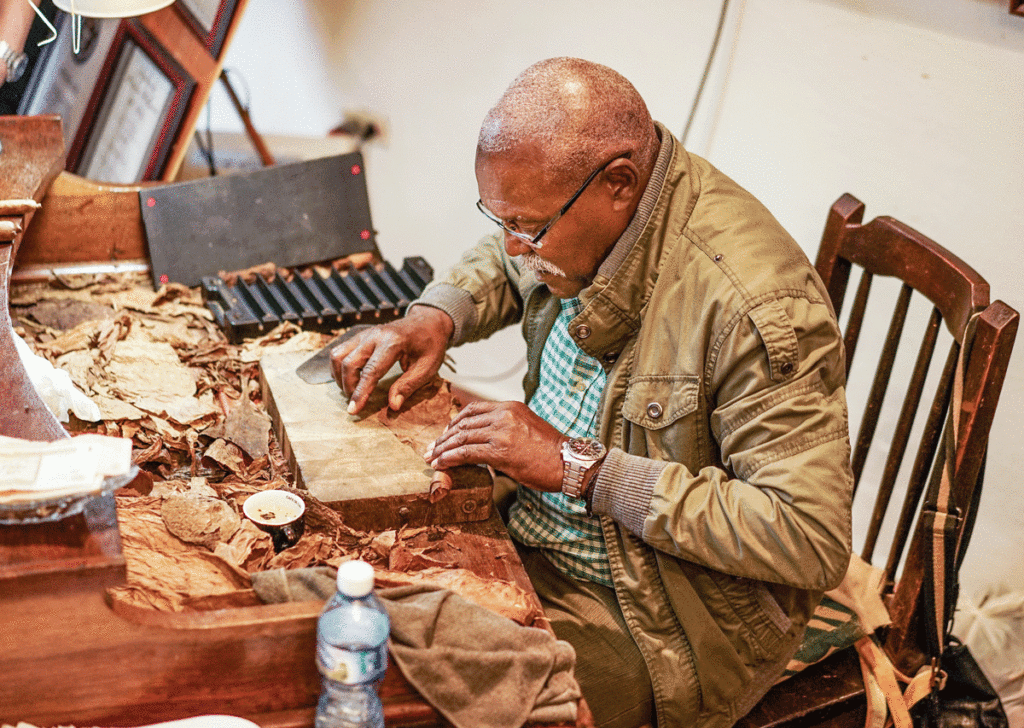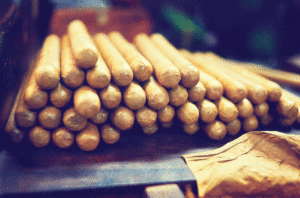 Christopher Columbus landed on Cuba’s Bahia de Gibara on Oct. 29, 1492. Native Americans on the island were smoking raw twists of leaves and introduced the practice to Columbus’s crew. This method would later be fashioned into what we know as the cigar today. Because of Columbus’s findings, cigar smoking first became popular in Spain and then the rest of the world.
Christopher Columbus landed on Cuba’s Bahia de Gibara on Oct. 29, 1492. Native Americans on the island were smoking raw twists of leaves and introduced the practice to Columbus’s crew. This method would later be fashioned into what we know as the cigar today. Because of Columbus’s findings, cigar smoking first became popular in Spain and then the rest of the world.
In 1890 Cubans began to immigrate to the United States. Among these immigrants were Cuban master rollers, and the country became a prominent producer of quality cigars. The United States still produces great cigars and the rolling tradition has been passed along through generations. It is important to note master rollers in the United States can make as much money as a certified nurse.
Private companies have hired rollers and begun to roll their own cigars. The process is quite extensive and requires, among other things, the growing, harvesting and leaf selection. The actual rolling process begins with the preparation of the fillers. The Cuban filler “entubar” method achieves superior airflow through the cigar. During this process the leaves are evenly distributed and folded individually, which will later affect the way a cigar burns. Make sure to pay attention to your cigar the next time you light up.
“If a cigar is poorly rolled, it will not burn evenly, causing it to become hot, go out and most importantly, the full flavor of the tobacco cannot be enjoyed,” Pablo Caballero, expert tobacconist, says.
A binder leaf will then hold the tobacco together and complete the filler part of the process. A cedar mold will then hold the tobacco bunch for approximately 30 to 45 minutes. After this, the tobacco is transferred to a cedar-rolling platform where the wrapper will be applied. The process is quite delicate because wrapper leaves are very expensive. This particular process can also be quite sentimental for rollers because platforms are usually passed on from generation to generation.
 Inspection of the leaves will allow the roller to choose the best part of the leaf and use his “chaveta” (roller’s knife), which is usually another family heirloom, to sculpt the wrapper leaf into optimum shape. The roller then applies vegetable glue to secure the wrapper. A tobacco bunch from the cedar mold is then taken and cut to perfect length and the wrapper is carefully applied from foot to head. After the cigar is wrapped, the cap is applied by punching a circle out of the wrapper leaf and applying the circle to the head of the cigar. Only after this process is complete is the band applied with vegetable glue.
Inspection of the leaves will allow the roller to choose the best part of the leaf and use his “chaveta” (roller’s knife), which is usually another family heirloom, to sculpt the wrapper leaf into optimum shape. The roller then applies vegetable glue to secure the wrapper. A tobacco bunch from the cedar mold is then taken and cut to perfect length and the wrapper is carefully applied from foot to head. After the cigar is wrapped, the cap is applied by punching a circle out of the wrapper leaf and applying the circle to the head of the cigar. Only after this process is complete is the band applied with vegetable glue.
So when paying a hefty price for a box of cigars, you might not only be paying for the quality of a roll but for the tradition and patience that comes with the art.
One of the few places in Austin that offers hand-rolled cigars is Bobalu Cigar Company. They have two locations, 6th Steet and in North Austin. You don’t have to wait to get your cigar rolled, you can stop in and buy directly from the shelf. If you can’t wait to get home, you may smoke it there.